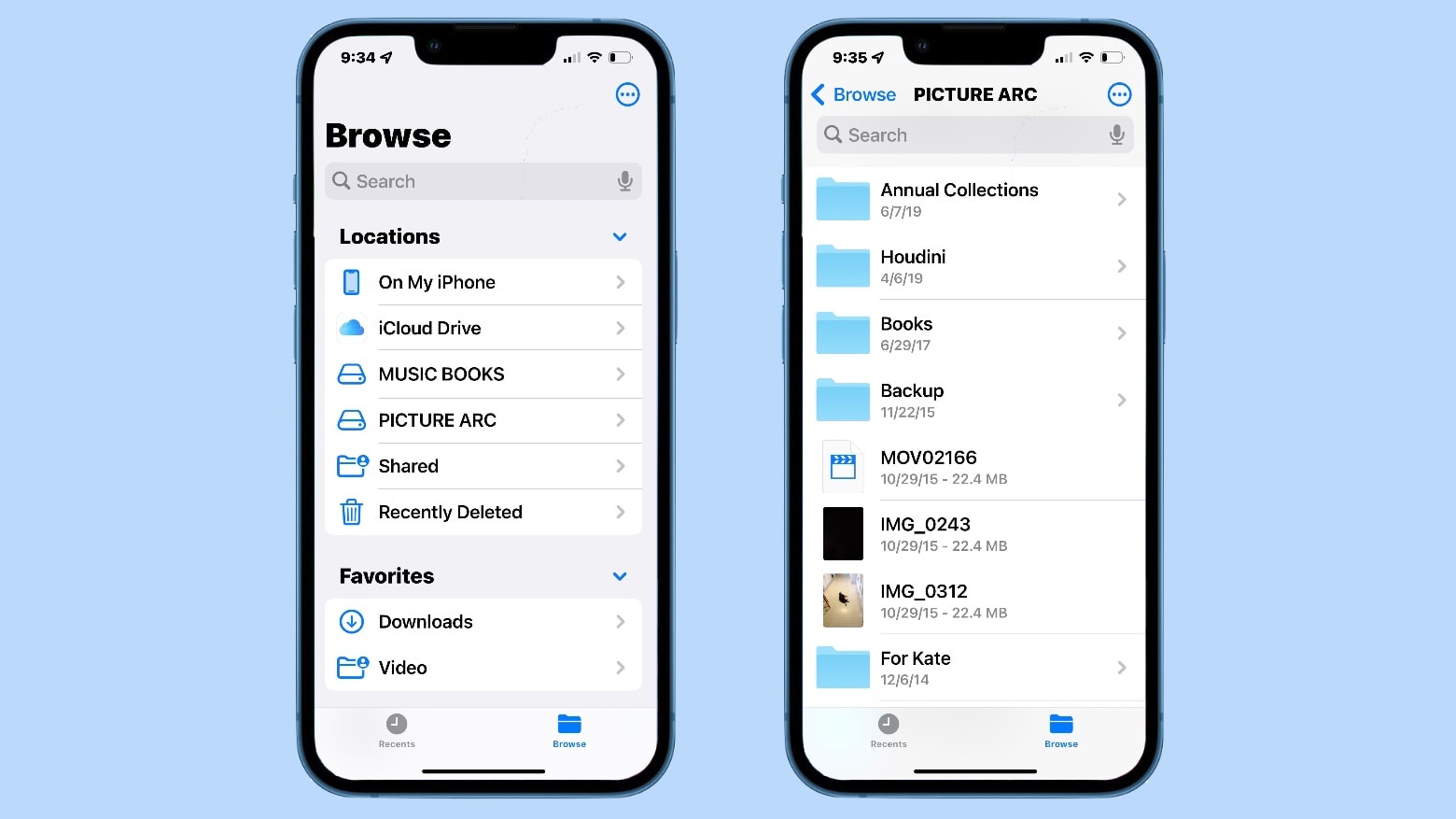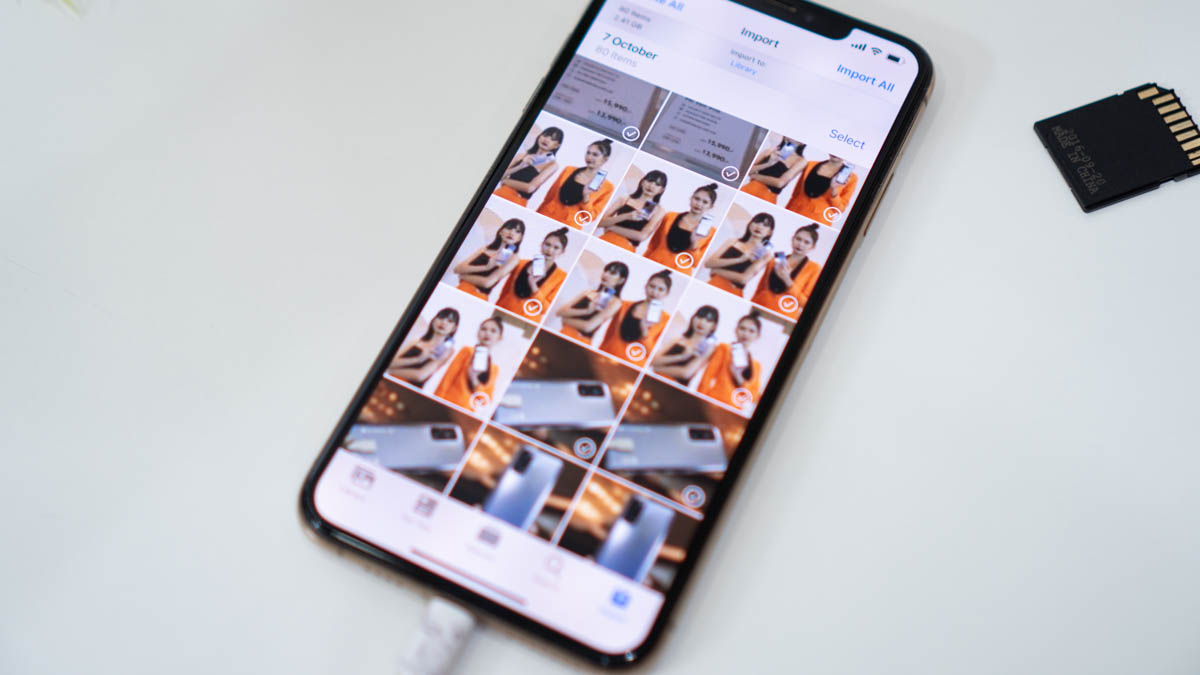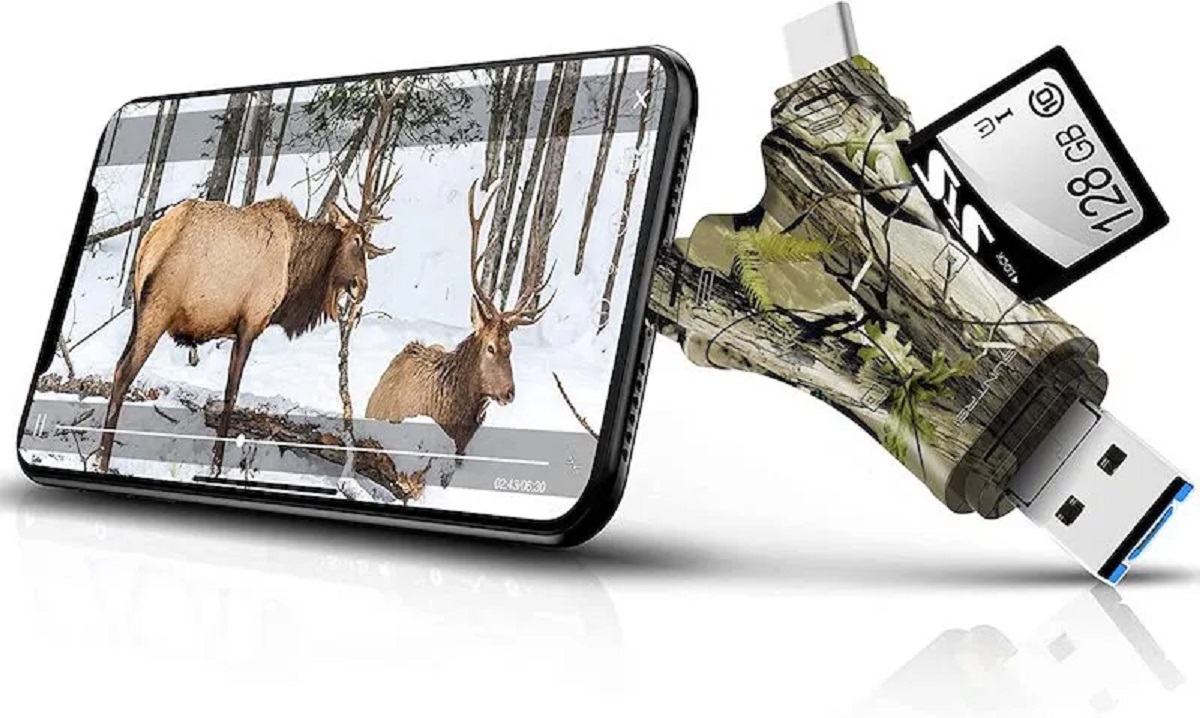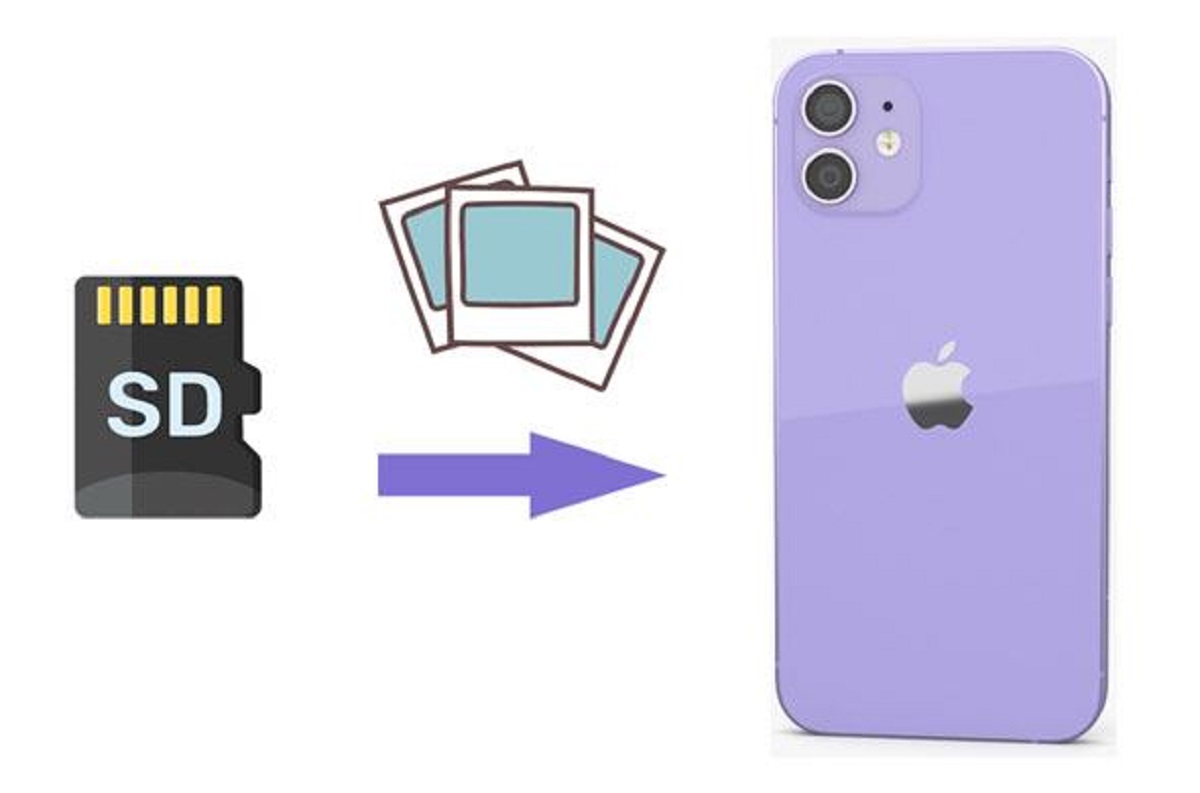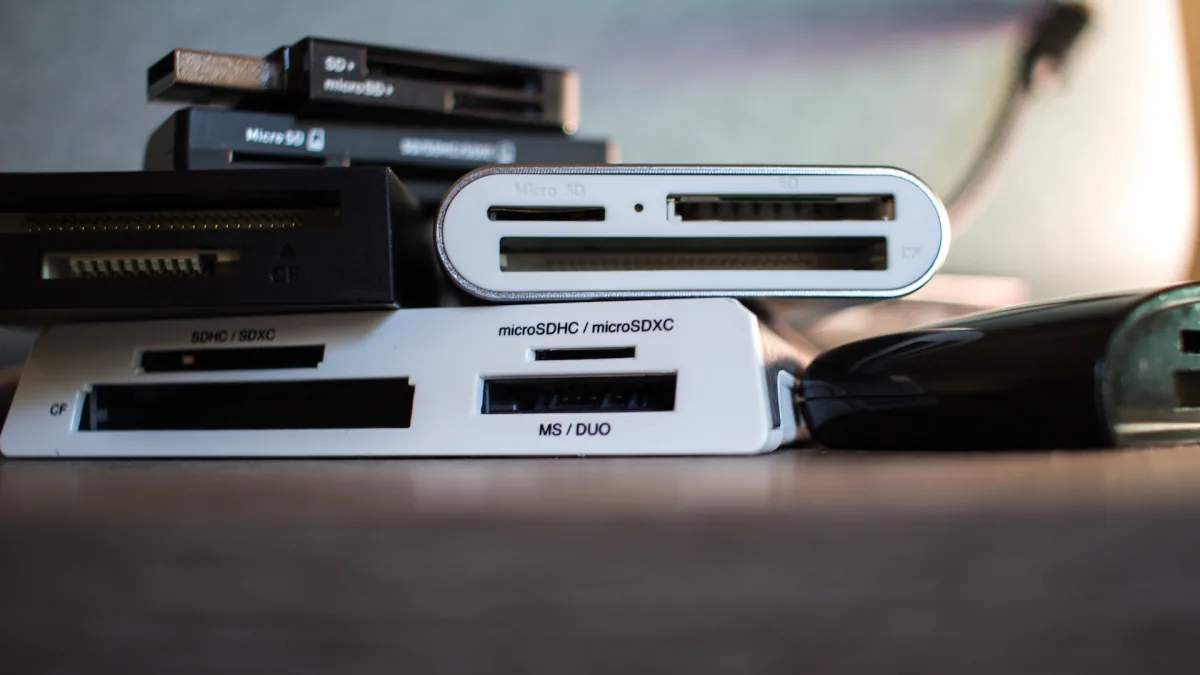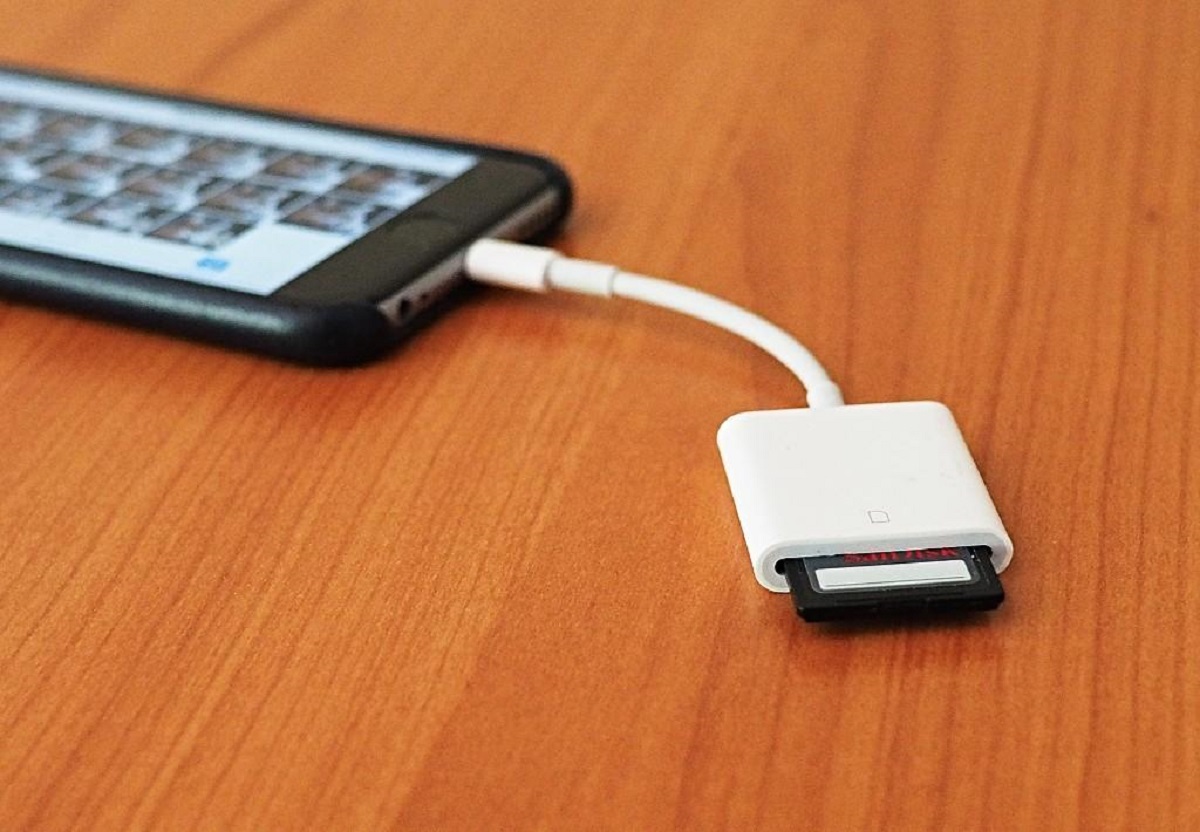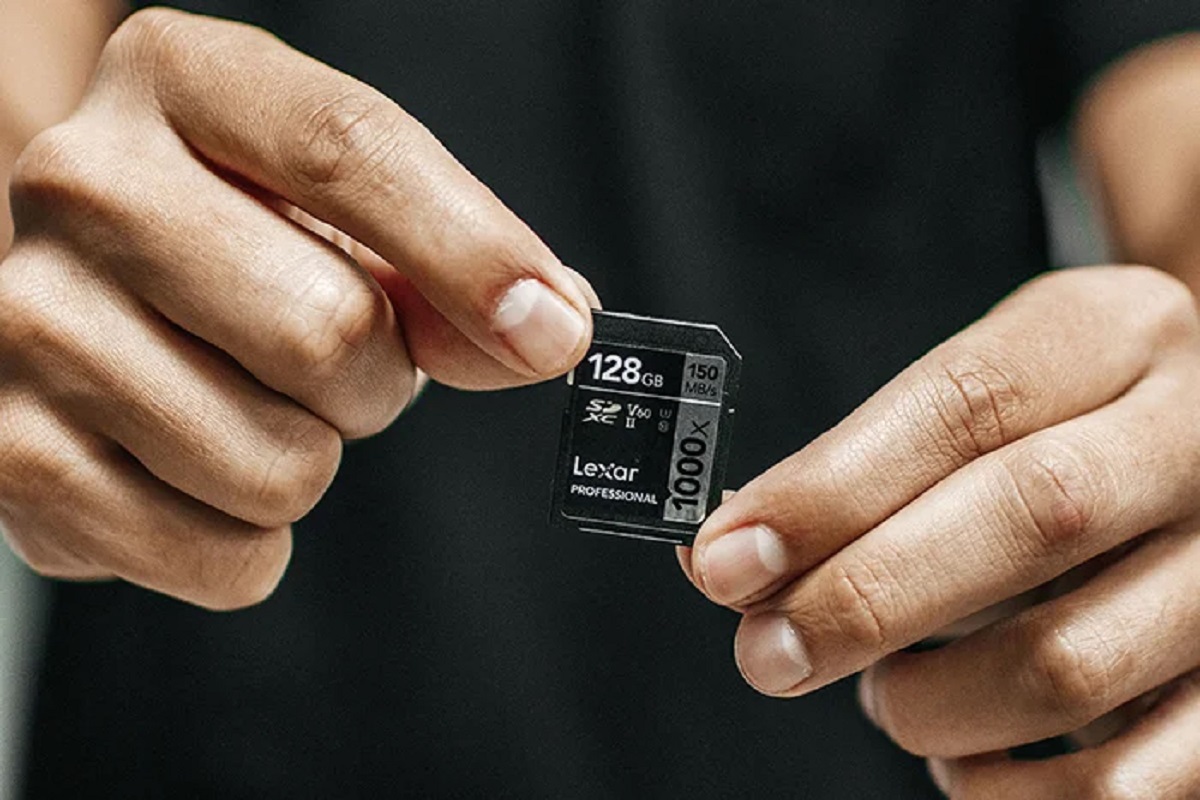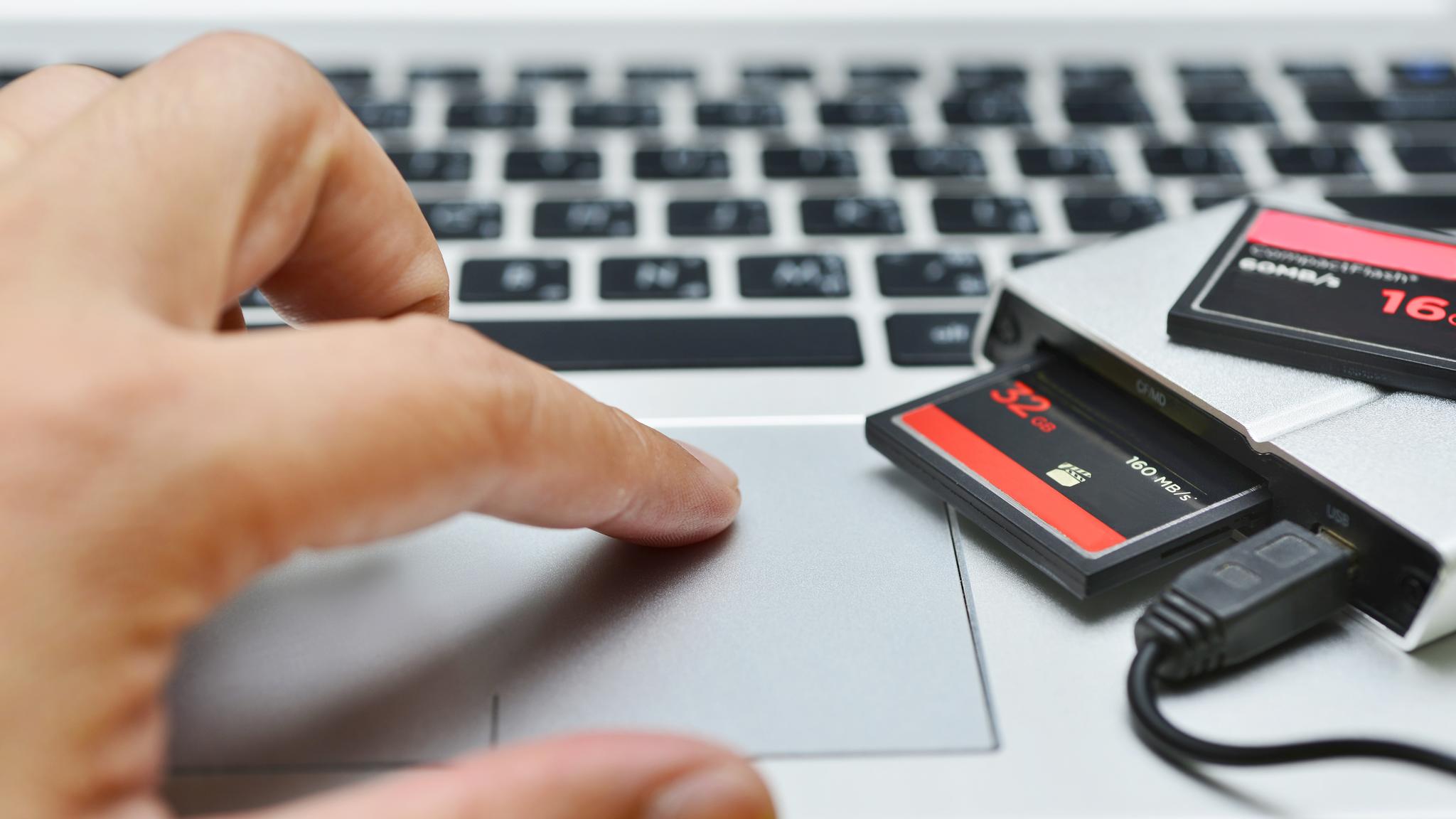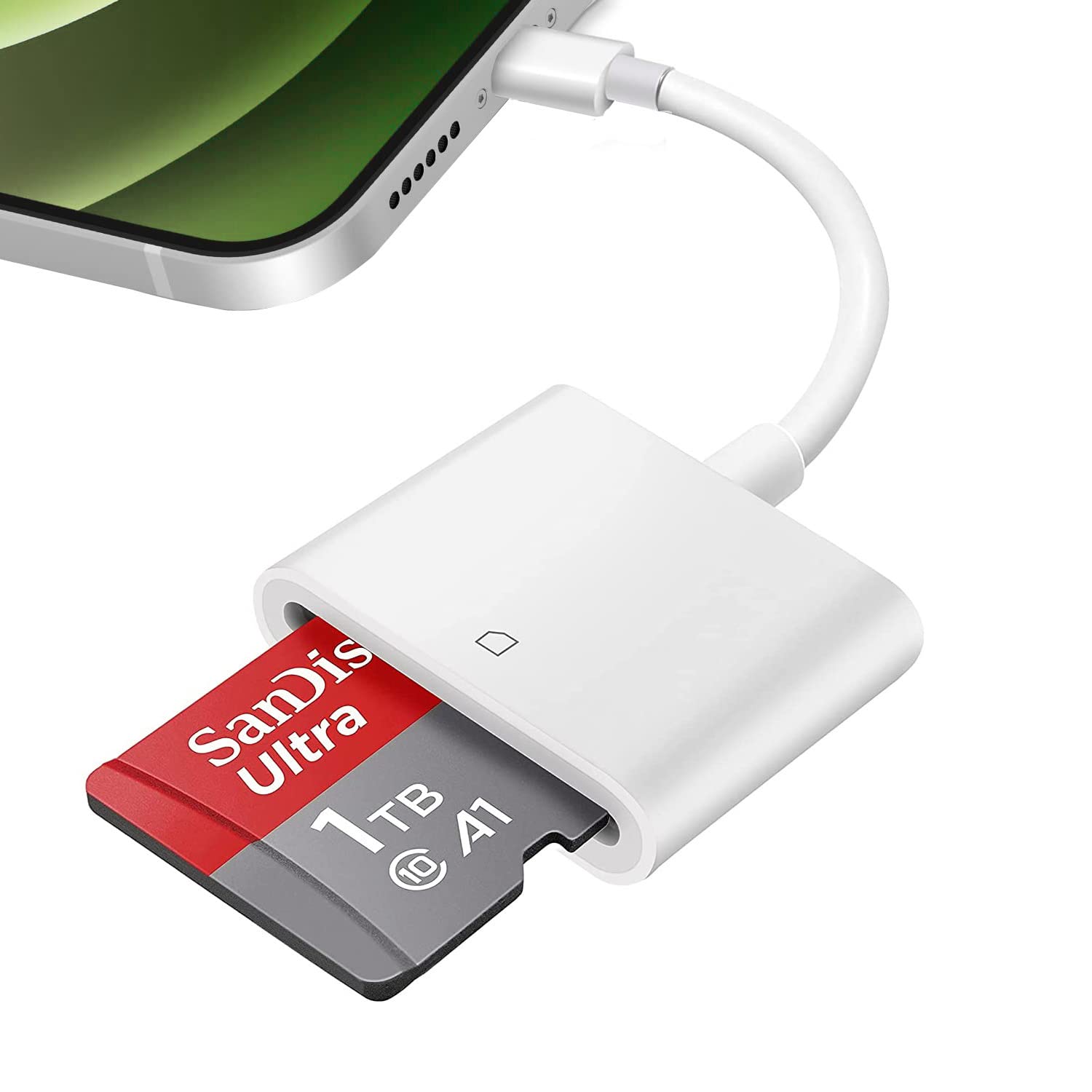Introduction
Welcome to this guide on how to view an SD card on your iPhone. If you own an iPhone, you might be aware that it doesn’t come with an SD card slot like some other smartphones. However, that doesn’t mean you can’t access the files and data stored on your SD card using your iPhone. In this article, we will explore different methods to view the content of your SD card directly on your iPhone.
Whether you want to view photos, videos, documents, or any other files stored on your SD card, we’ve got you covered. With the advancements in technology, there are several solutions available that allow you to seamlessly access and manage your SD card data on your iPhone.
By following the methods outlined in this guide, you can save yourself the hassle of transferring files to your iPhone’s internal storage or using multiple devices to access your SD card content. These methods will enable you to conveniently view and manage your SD card files without the need for additional hardware or complicated processes.
Now, let’s dive in and explore the various methods to view an SD card on your iPhone. Whether you have a physical SD card reader or prefer using wireless solutions, we will guide you step-by-step through each method. Ensure you have your SD card handy, as you will need it to follow along with the instructions.
Benefits of Viewing SD Card on iPhone
There are several benefits to being able to view an SD card on your iPhone. Here are some of the key advantages:
- Convenience: One of the main benefits of viewing an SD card on your iPhone is the convenience it offers. Instead of transferring files to your phone’s internal storage or using a separate device to access the SD card, you can directly view and manage the files on your iPhone. This saves you time and effort, allowing you to access your SD card data on the go.
- Expandable Storage: iPhones typically come with limited storage options, and running out of space can be frustrating, especially if you have important files or media to store. By viewing an SD card on your iPhone, you can effectively expand your storage capacity. You can store and access a larger volume of files without worrying about filling up your phone’s internal memory.
- Easy File Transfer: Viewing an SD card on your iPhone eliminates the need for complex file transfer processes. Rather than connecting your iPhone to a computer and transferring files back and forth, you can simply insert the SD card into your iPhone and access the files directly. This streamlines the file transfer experience and makes it more straightforward and efficient.
- On-the-Go Access: Having the ability to view an SD card on your iPhone allows you to access your files wherever you are. Whether you’re traveling, attending a meeting, or simply away from your computer, you can still view and manage your SD card data. This flexibility and portability enhance your productivity and ensure that you never miss out on important files when you need them.
- Data Backup and Security: By viewing your SD card files on your iPhone, you can easily back up important data or create duplicates for added security. In the event of a device malfunction or data loss, having your SD card files backed up on your iPhone ensures that you have a copy readily available. This protects your valuable data and provides peace of mind.
Overall, being able to view an SD card on your iPhone offers convenience, expandable storage, easy file transfer, on-the-go access, and data backup and security. These benefits make it a valuable feature for anyone looking to efficiently manage and access their SD card files using their iPhone.
Step-by-Step Guide on How to View SD Card on iPhone
Now, let’s dive into the step-by-step guide on how to view an SD card on your iPhone:
- Method 1: Using an SD Card Reader
- Start by connecting the SD card reader to the Lightning or USB-C port on your iPhone, depending on the model.
- Next, insert your SD card into the card reader.
- Once connected, your iPhone should detect the SD card automatically.
- You will be prompted to open the Files app or a compatible third-party file manager app.
- Select the app you want to use to view the SD card files.
- You can now browse, view, and manage the files on your SD card using the chosen app.
- Method 2: Using a File Manager App
- First, download and install a file manager app from the App Store. There are several options available, such as Documents by Readdle, FileMaster, or iFile.
- Open the file manager app on your iPhone.
- Look for an option to connect to an external device or cloud storage.
- Select the suitable option, and choose “SD card” as the source.
- If prompted, grant permission for the app to access your SD card.
- You should now be able to view and manage the files on your SD card directly within the file manager app.
- Method 3: Using a Wireless SD Card
- Start by purchasing a wireless SD card, such as the Eye-Fi or Transcend Wi-Fi SD card.
- Insert the wireless SD card into your camera or device and follow the card’s instructions to set it up.
- Download and install the respective app for the wireless SD card on your iPhone.
- Open the app and connect to the wireless SD card, following the provided instructions.
- Once connected, you can view and manage the files stored on the SD card directly from your iPhone using the app.
If you have a physical SD card reader, follow these steps:
If you don’t have an SD card reader, you can use a file manager app to view your SD card files. Here’s how:
If you prefer a wireless solution, you can use a wireless SD card. Follow these steps:
By following these step-by-step methods, you can easily view an SD card on your iPhone and access its contents with ease. Choose the method that best suits your needs and available resources, and enjoy seamless access to your SD card data on your iPhone.
Method 1: Using an SD Card Reader
If you have a physical SD card reader, you can follow these steps to view your SD card on your iPhone:
- Start by connecting the SD card reader to the Lightning or USB-C port on your iPhone, depending on the model.
- Next, insert your SD card into the card reader.
- Once connected, your iPhone should automatically detect the SD card.
- You will be prompted to open the Files app or a compatible third-party file manager app. Choose the one you prefer.
- After selecting the app, it will open, and you will see the SD card listed as an external device.
- Navigate to the SD card folder or specific file location you want to view.
- From here, you can browse, view, and manage the files on your SD card just as you would with any other files on your iPhone.
Using an SD card reader provides a straightforward and direct method to view your SD card on your iPhone. It allows you to access and manage the files on your SD card conveniently without the need for any additional software or complicated setup.
Remember to safely eject your SD card from the reader once you have finished viewing and managing the files. This will help prevent data loss and ensure the longevity of your SD card.
It’s important to note that not all SD card readers are compatible with iPhones. Make sure to purchase a reader specifically designed for use with iOS devices to ensure compatibility and optimal performance.
If you encounter any issues when using an SD card reader, ensure that it is properly connected to your iPhone and that your iOS software is up to date. You can also try using a different card reader or testing the SD card on another device to narrow down the source of the problem.
Now that you know how to use an SD card reader to view your SD card on your iPhone, you can easily access and manage your files without any hassle. This method offers a simple and efficient way to transfer, view, and organize your SD card data directly on your iPhone.
Method 2: Using a File Manager App
If you don’t have an SD card reader, you can still view your SD card on your iPhone using a file manager app. Follow these steps:
- First, download and install a file manager app from the App Store. There are several options available, such as Documents by Readdle, FileMaster, or iFile.
- Once the app is installed, open it on your iPhone.
- Look for an option to connect to an external device or cloud storage. This option may be labeled differently depending on the file manager app you are using.
- Select the appropriate option and choose “SD card” as the source to access your SD card.
- If prompted, grant the app permission to access your SD card.
- After successfully connecting to the SD card, you will be able to view its contents within the file manager app.
- Browse through the files and folders on your SD card to locate and view the specific files you are interested in.
- From within the file manager app, you can perform various actions such as copying, moving, renaming, and deleting files on your SD card.
Using a file manager app provides a convenient and versatile method to access your SD card files on your iPhone. With these apps, you can not only view the files but also manage and organize them without the need for an external SD card reader.
It’s worth noting that different file manager apps may have slight differences in their interface and features. Experiment with different apps to find the one that best suits your preferences and needs.
If you encounter any issues when using a file manager app, ensure that the app is granted permission to access both your SD card and the required settings on your iPhone. Additionally, make sure you have a stable internet connection if you are using a cloud storage option within the app.
By following these simple steps, you can easily view and manage your SD card files using a file manager app on your iPhone. Enjoy the flexibility and convenience of exploring your SD card’s contents directly from your device, without the need for any additional hardware or complex setup.
Method 3: Using a Wireless SD Card
If you prefer a wireless solution, you can use a wireless SD card to view the contents of your SD card on your iPhone. Here’s how:
- Start by purchasing a wireless SD card that is compatible with your camera or device. Some popular options include Eye-Fi and Transcend Wi-Fi SD cards.
- Insert the wireless SD card into the SD card slot on your camera or device, following the manufacturer’s instructions.
- Download and install the respective app for the wireless SD card on your iPhone from the App Store.
- Open the app on your iPhone and connect it to the wireless SD card using the instructions provided by the app.
- Once connected, you will be able to view the files stored on the SD card through the app on your iPhone.
- Browse through your SD card’s files and folders to find the specific content you would like to view or manage.
- With the wireless SD card app, you can also upload, download, or share files directly from your iPhone.
Using a wireless SD card offers the advantage of eliminating the need for physical connections or cables. It allows you to access and manage your SD card’s data wirelessly, providing convenience and flexibility.
Keep in mind that the specific features and functionalities of the wireless SD card app may vary depending on the brand and model you choose. Some apps may offer additional features such as automatic file transfers, remote shooting, or cloud storage integration.
When using a wireless SD card, ensure that both your iPhone and the wireless SD card are connected to the same Wi-Fi network. This ensures a stable and fast connection between the two devices.
If you experience any connectivity issues or have trouble accessing your wireless SD card, make sure to check your network settings and consult the app’s user manual or support documentation for troubleshooting steps.
With the convenience of a wireless SD card, you can easily view and manage your SD card’s files on your iPhone without the need for cables or additional hardware. Embrace the freedom of wireless access and enjoy the flexibility it provides for on-the-go file management and sharing.
Tips for Troubleshooting SD Card Viewing Issues on iPhone
While viewing an SD card on your iPhone is generally a straightforward process, you may encounter some issues along the way. Here are some tips to help you troubleshoot and resolve common SD card viewing issues on your iPhone:
- Ensure Proper Connection: When using an SD card reader, make sure it is securely connected to your iPhone’s Lightning or USB-C port. If using a wireless SD card, ensure that both your iPhone and the wireless SD card are connected to the same Wi-Fi network.
- Restart Your iPhone and SD Card: Sometimes, a simple restart can help resolve connection issues. Try restarting both your iPhone and the SD card, then attempt to view the SD card again.
- Update iOS and App Firmware: Keeping your iPhone’s iOS software and the apps associated with viewing SD cards up to date is crucial. Check for any available updates and install them to ensure compatibility and optimal performance.
- Grant App Permissions: If using a file manager app or a wireless SD card app, ensure that the app has the necessary permissions to access both your iPhone’s storage and the SD card. You can manage app permissions in your iPhone’s settings.
- Try a Different SD Card Reader: If you are experiencing issues with a specific SD card reader, try using a different one to see if the problem lies with the reader itself. Different readers may have varying levels of compatibility with your iPhone.
- Test the SD Card on Another Device: To determine if the issue is with the SD card or your iPhone, try inserting the SD card into another device, such as a computer or camera. If the card works fine on another device, the problem may lie with your iPhone’s compatibility or settings.
- Clear App Cache: If you are using a file manager app, clearing the app’s cache can help resolve any temporary data or cache-related issues. Refer to the app’s settings or support documentation for instructions on how to clear the cache.
- Contact Customer Support: If you have tried the above tips and are still experiencing difficulties viewing your SD card on your iPhone, reach out to the customer support of the SD card reader manufacturer or the app developer for further assistance. They may be able to provide specific troubleshooting steps or offer additional insights.
By following these tips, you can overcome common issues and troubleshoot any problems you may encounter while viewing an SD card on your iPhone. Remember, patience and persistence often lead to successful resolution, so don’t hesitate to give these troubleshooting tips a try.
Conclusion
Being able to view an SD card on your iPhone opens up a world of convenience and flexibility, allowing you to access and manage your files directly from your device. Whether using an SD card reader, file manager app, or a wireless SD card, there are multiple methods available to accomplish this.
In this guide, we explored three different methods:
- Using an SD Card Reader: This involves connecting a physical SD card reader to your iPhone’s Lightning or USB-C port. It allows you to directly access and manage your SD card files using the Files app or a compatible third-party file manager app.
- Using a File Manager App: If you don’t have an SD card reader, a file manager app can provide an alternative solution. By connecting to the SD card through the app, you can view, organize, and transfer files between your iPhone and the SD card.
- Using a Wireless SD Card: For a wireless and cable-free experience, a wireless SD card enables you to access your SD card files through a dedicated app on your iPhone. This method provides flexibility and ease of use, allowing you to view and manage your SD card content from anywhere.
Throughout the guide, we also provided tips for troubleshooting common SD card viewing issues on your iPhone. These included ensuring proper connections, updating firmware, granting app permissions, and more.
Now that you have a comprehensive understanding of the different methods available and troubleshooting tips, you can confidently access and manage your SD card files on your iPhone. Choose the method that suits your needs and enjoy the convenience and expanded storage capacity that comes with viewing an SD card on your iPhone.
Remember to handle your SD card with care, safely eject it from any devices or readers, and keep it protected from physical damage. By navigating and managing your SD card files with caution, you can ensure the longevity of your data and enjoy a seamless viewing experience on your iPhone.







